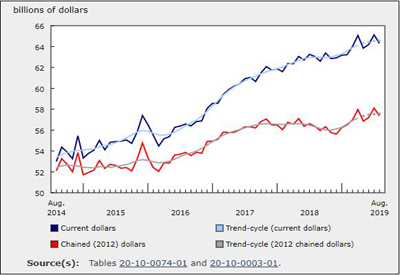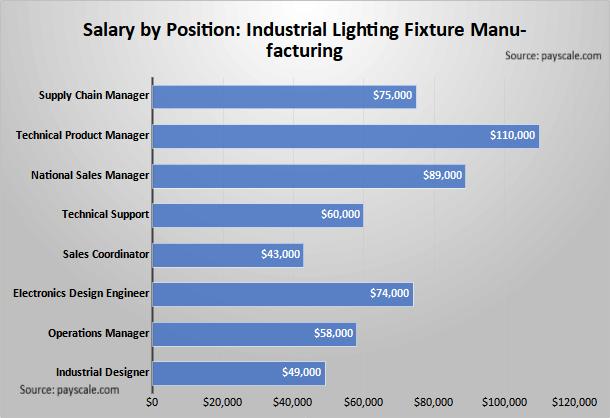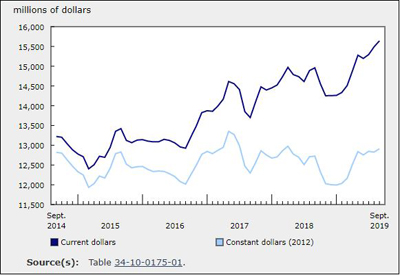Monthly Survey of Manufacturing, April 2022

June 17, 2022
Manufacturing sales rose 1.7% to $72.3 billion in April, mainly on higher sales in the petroleum and coal product (+3.7%), motor vehicle (+8.2%), and primary metal (+4.1%) as well as higher production of aerospace product and parts (+11.2%) industries. Meanwhile, wood product sales decreased the most (-6.0%).
Sales in constant dollars rose 0.9% in April, indicating that both prices and volume sold contributed to the gains in April. The Industrial Product Price Index rose 0.8% in April.
Petroleum sales continue to increase
Sales of petroleum and coal products marked a new record high, rising 3.7% to $10.1 billion in April, the fourth consecutive monthly gain. Higher prices were mainly responsible for the increase as real value sales increased 0.5%. The global disruptions of energy supply caused by the Russian invasion of Ukraine were responsible for the surge in prices of refined petroleum energy products (including liquid fuels), which increased 4.7% in April. Exports of refined petroleum energy products were up 14.4% in April.
Sales of motor vehicles increased 8.2% to $4.5 billion in April, the third month-over-month increase and the highest sales since August 2020. Year over year, sales in the motor vehicle industry were up 100.4%. Accordingly, sales of motor vehicle parts rose 2.0% to $2.7 billion. Exports of motor vehicles and parts rose 3.9% in April, the highest level since October 2020.
Following an 8.6% increase in March, primary metal sales rose 4.1% to $6.2 billion in April, on higher prices and volumes sold. The limited metal production in China due to the COVID-19 pandemic and global supply interruptions due to the Russia aggression against Ukraine led to an increase in prices of basic and semi-finished iron or steel products (+3.2%). Monthly sales in constant dollars rose 2.9% in April, while year over year, sales were up 26.0%.
Higher production of aerospace product and parts (+11.2%) and higher sales of food (+1.2%) and machinery (+3.0%) also contributed to the gains in the manufacturing sector in April.
Following seven consecutive monthly increases, wood product sales declined 6.0% to $4.5 billion in April, primarily on lower prices. Prices for softwood lumber were down 13.7%, while exports of lumber and other sawmill products decreased 2.6% in April. Wood product sales in constant dollars were down 1.3%.
Sales of paper products decreased 7.9% to $2.5 billion in April, following a 10.1% increase in March. Despite the decline in April, sales of paper products were up 4.1% compared with the same month a year earlier. Sales of paper in real terms fell 10.1% month over month in April.
Sales also declined in the non-metallic mineral product (-3.8%), beverage and tobacco product (-3.4%) and other transportation equipment (-16.0%) industries in April.
Sales in Alberta increase the most, mainly on higher petroleum sales
Manufacturing sales increased in six provinces in April, led by Alberta and Quebec. British Columbia posted the largest decline.
In Alberta, sales rose 6.5% to $9.5 billion in April, primarily on higher sales of petroleum and coal products (+15.5%) and chemicals (+15.1%). The gains were partially offset by lower sales of fabricated metal products (-13.1%). On a year-over-year basis, total sales in Alberta rose 37.6% in April.
In Quebec, sales increased 2.1% to $18.0 billion in April, the fourth consecutive month-over-month gain. The increase was mainly attributable to sales of primary metals (+8.2%) and production of aerospace product and parts (+27.6%). With the increase in April, total manufacturing sales in Quebec were up 20.0% year over year.
In British Columbia, following seven consecutive monthly increases, sales declined 2.9% to $5.8 billion in April, mainly on lower sales in the paper and wood product industries. Despite the decrease in April, total sales in British Columbia stood 7.3% higher compared with the same month a year earlier.
Edmonton marks the largest increase in sales among selected census metropolitan areas
Manufacturing sales increased in 7 of the 15 census metropolitan areas in April, led by Edmonton and Montréal. Sales in Québec declined the most.
Sales in Edmonton were up 12.2% to $4.9 billion in April, mainly on higher sales of petroleum products (+19.1%). The petroleum and coal product industry has been the main contributor to manufacturing sales in Edmonton since February 2022. Year over year, total sales in Edmonton rose 70.3% in April.
Sales in Montréal increased 3.9% to $7.9 billion in April, on higher sales in 10 of 21 industries. The gains were driven by higher production of aerospace product and parts (+72.8%) and sales of machinery (+21.5%) and computer and electronic products (+4.3%).
Sales in Québec fell 8.0% to $2.0 billion in April, following a 16.9% increase in March. Lower sales of petroleum and coal products were almost entirely responsible for the decline. Despite the decrease, total sales in Québec were up 58.8% year over year in April.
Record-high inventory levels continue
Total inventory levels increased 2.3% to $111.8 billion in April, mainly on higher inventories of the machinery (+5.6%), chemical (+3.8%) and miscellaneous manufacturing (+12.6%) industries. Meanwhile, inventories of motor vehicles declined 10.0% in April.
The inventory-to-sales ratio increased from 1.54 in March to 1.55 in April. This ratio measures the time, in months, that would be required to exhaust inventories if sales were to remain at their current level.
Unfilled orders rise
The total value of unfilled orders rose 2.9% to $103.9 billion in April, the sixth consecutive monthly increase and the highest level since March 2020. The gains were mainly attributable to higher unfilled orders in the aerospace product and parts (+5.0%), fabricated metal (5.9%), and machinery (+3.9%) industries. The total value of unfilled orders rose 22.0% on a year-over-year basis in April.
The total value of new orders marked a new record high, rising 3.1% to $75.2 billion in April mainly on higher new orders of aerospace product and parts, fabricated metals and motor vehicles.
Capacity utilization rate declines on lower production
The capacity utilization rate (not seasonally adjusted) for the total manufacturing sector decreased from 81.9% in March to 79.9% in April on lower production.
The capacity utilization rates fell in 17 of 21 industries in April and were most noticeable in the transportation equipment (-2.7 percentage points), petroleum and coal product (-3.7 percentage points), machinery (-2.7 percentage points) and computer and electronic product (-6.0 percentage points) industries. The declines were partially offset by a higher production capacity rate in the non-metallic mineral product industry (+2.4 percentage points).











